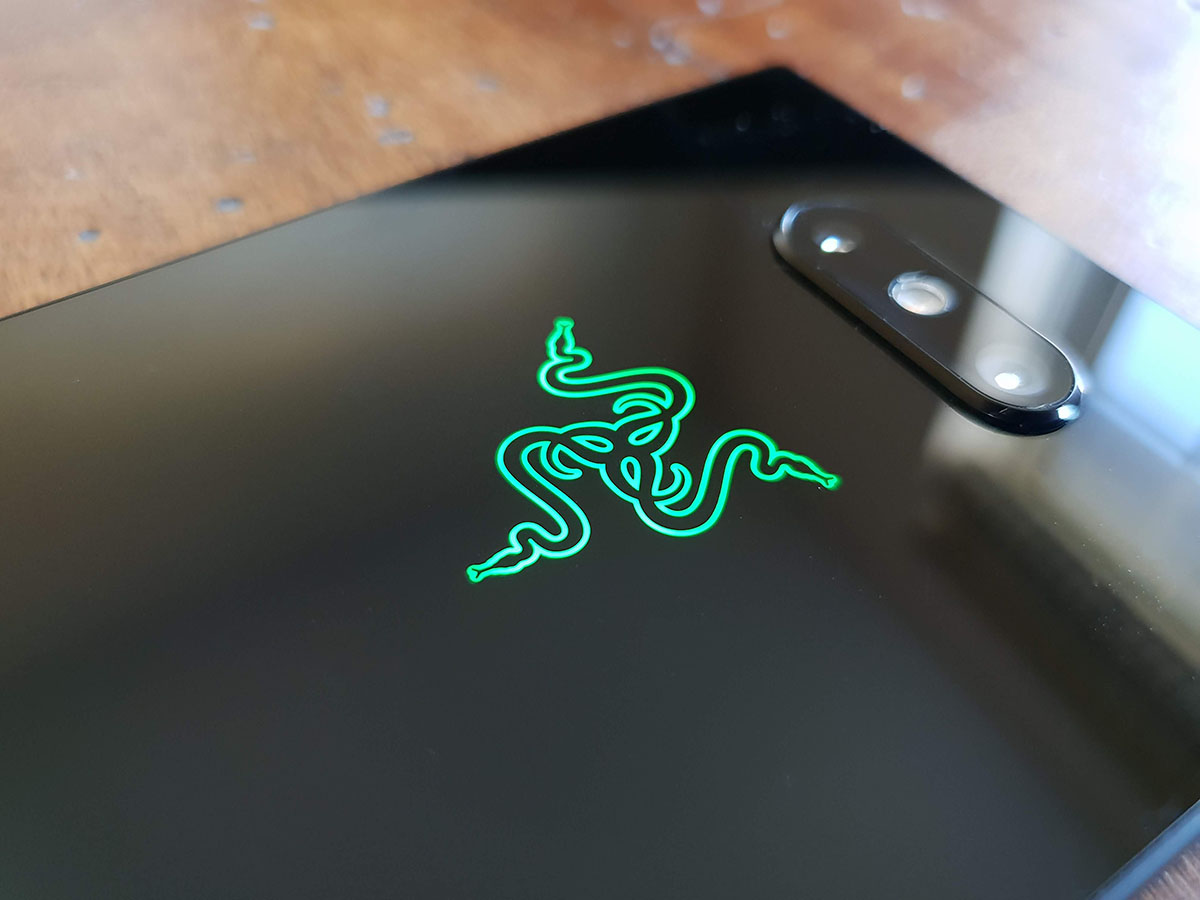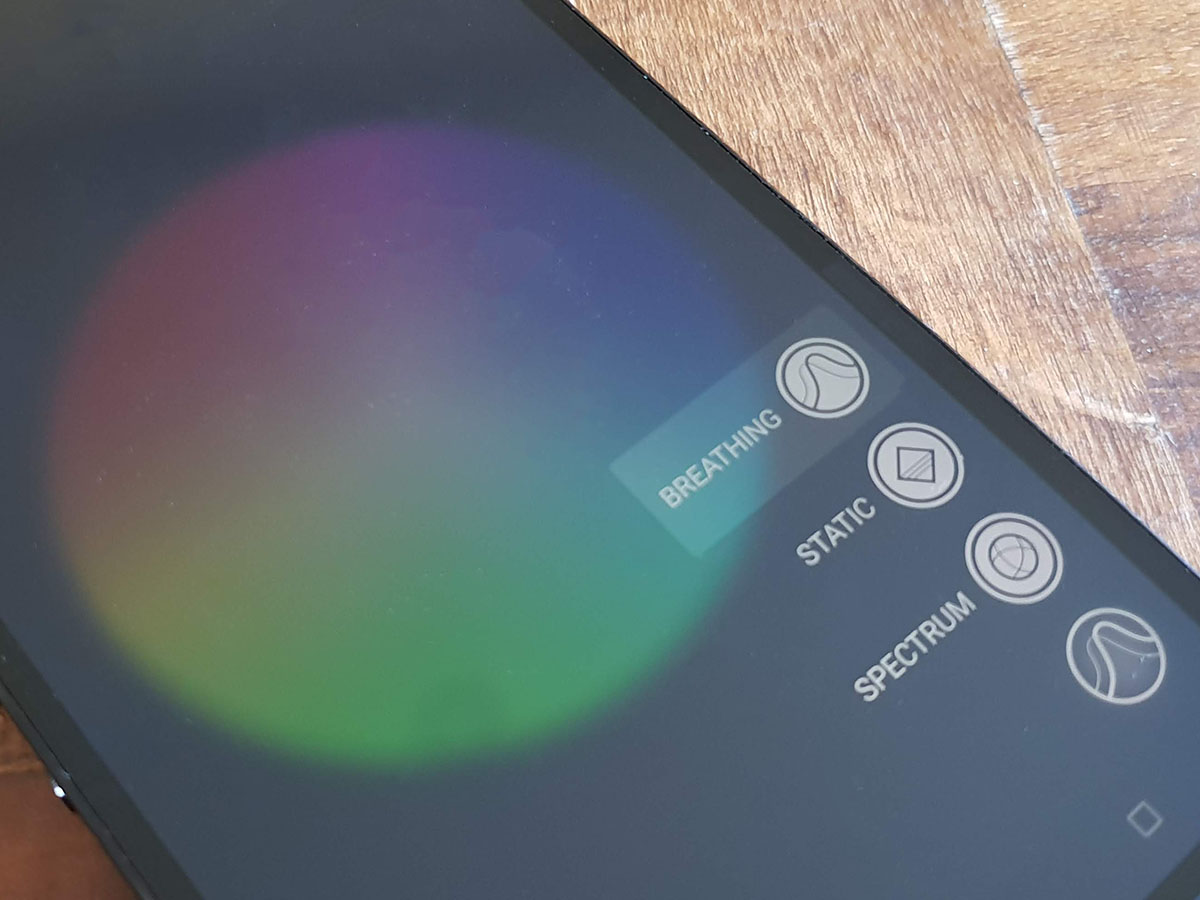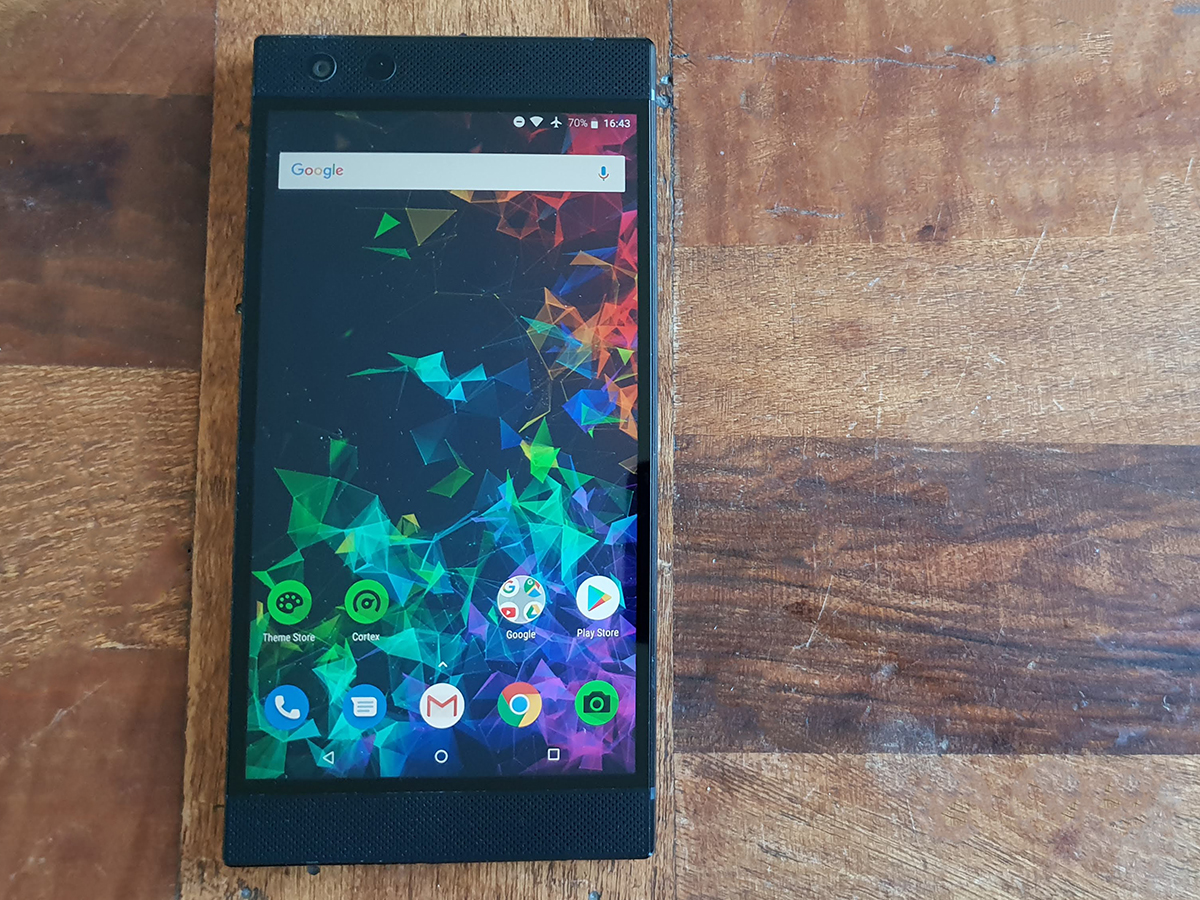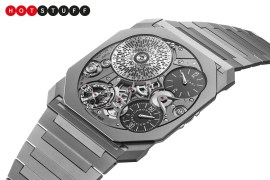Razer Phone 2 review
Still the most gamer-friendly screen on a smartphone, but now with added RGB flair

Know your audience. Pretty much the most important thing when it comes to niche hardware like the Razer Phone.
When the rest of the smartphone world was cranking out handsets that tried to be the best of all things, the RGB-addicted gaming hardware experts ignored the trend for skinny screens, barely-there bezels and (shudder) notches, opting instead for an unashamedly industrial phone that catered specifically to mobile gamers. And fans ate it up.
Twelve months down the line, and Razer is back with a sequel.
On the surface, not much has changed, but underneath, some welcome quality of life upgrades won’t just please existing customers – they give it a much better chance of competing with 2018’s more mainstream phones.
DESIGN & BUILD: IT’S HIP TO BE SQUARE
The sequel is ever-so-slightly less brick-like than the original Razer Phone, thanks to some curved edges that make it a bit more comfortable to grip – but this is still a chunky handset.
The Space 2001 monolith vibe continues up front, with straight lines and sharp angles, and two large speaker grilles topping and tailing the 5.7in display – which are somehow IP67 water resistant, a first for Razer.
Around back, metal has been swapped for Gorilla Glass (allowing wireless charging for the first time). The camera has moved, but still protrudes out of the phone case.
It’s also impossible to miss that light-up logo. Pretty much all Razer products have some kind of RGB lighting, so when the original phone arrived sans any LEDs, fans were up in arms. Razer has rectified that for 2018, so now the logo illuminates in whatever custom colour and pattern you want. Gimmicky? Hell yes, but Razer customers are sure to love it.
Other aspects remain unchanged, meaning volume buttons moved far enough out of reach to avoid accidental presses when playing games, a USB-C charging port on the bottom of the phone (with a 3.5mm dongle in the box, as there’s no headphone socket) and a power button that doubles as a fingerprint reader. It’s not quite as easy to reach as it was on Sony’s old Xperia phones, on account of the sheer size of the phone, but it’s quick to unlock the handset once you actually get a digit on the sensor.
Design- and dimension-wise, Razer’s hands were tied by its Project Linda dockable laptop concept. This optional accessory let you dock the original Razer Phone into the spot you’d normally find a laptop touchpad, essentially turning it into a gamer-friendly Chromebook. Or it would have, had the thing ever actually gone on sale.
Seeing as you still can’t buy one a year after it was first revealed, it’s anyone’s guess as to whether Razer will actually follow through with the concept. Either way, you’ve got to hope Razer mixes things up if it makes a third phone – as it stands, the Razer Phone 2 feels decidedly old-school compared to almost every other 2018 smartphone, with its chunky bezels and boxy shape.
DISPLAY & SOUND: THAT’S REFRESHING
A QHD+ resolution, 120Hz variable refresh rate and HDR support – most gamers would sell their Steam account for a monitor that good, let alone a smartphone with the same features. But that’s exactly what you get with the Razer Phone 2.
Things have improved from last year, with an even higher peak brightness that really makes HDR video pop. Colour accuracy was a big focus for 2018, apparently, and videos appeared vibrant without becoming unrealistic. Contrast is very good, but this being an LCD screen, still some way off the best OLED panels.
The screen is perfectly visible outdoors now, even if cranking the brightness can be a drain on the battery.
The real selling point is the 120Hz panel, which can adjust its refresh rate to match the game you’re playing for smooth frame rates. You can dial it back to 90Hz or 60Hz if you like, and drop the resolution with it for more fine-grain control over the display. The end result is far more fluid and engaging than you’ll find on other smartphones.
Some games just don’t want to play ball, however, either not syncing correctly or offsetting the touch layer so where you tap doesn’t correspond with what’s onscreen.
Beyond the specs, though, this is still a 16:9 screen with fairly chunky bezels, no fancy curves and definitely no notch. Depending on your preference, that could be a good or a bad thing, but put this handset side-by-side with an iPhone XS or Galaxy S9 and it looks unashamedly old-school.
The impossible-to-ignore speakers above and below the screen deliver exceptionally loud audio, with Dolby Atmos and 5.1 surround sound, although those logos are to be taken with a pinch of salt. The digital EQ settings might give bass a boost for movies and sharpen up the treble for music, but they’re not a patch on the real thing. That’s Dolby’s fault for diluting its brand, though, not Razer’s – and there’s no denying this phone sounds fantastic.
PERFORMANCE & BATTERY LIFE: PACE-SETTER
It’ll come as no surprise that a phone designed to play games at their best has the most powerful smartphone CPU going.
The Razer Phone 2 uses a Snapdragon 845 octa-core chip running at 2.8GHz, and is paired with a whopping 8GB of RAM. Unsurprisingly, that means everything feels super smooth – and that’s before you take the variable refresh screen into account.
Games look brilliant with everything maxed out, with Player Unknown’s Battlegrounds in particular feeling very responsive. Razer says it has prioritised input latency and lag reduction for its second phone, and while things don’t feel dramatically different to another top-spec smartphone like a Galaxy S9, the small tweaks add up.
Is it the best phone around for playing games on? If your gaming habits go beyond Candy Crush, then absolutely – the screen and performance combine for a top notch experience.
Razer’s custom vapour chamber cooling is supposed to keep the CPU cooler than rival handsets, meaning it can run at higher frequencies for longer. It might keep the phone from burning up, but it couldn’t stop it from getting toasty after a round of PUBG with the detail levels maxed out. On the other hand, performance didn’t take nosedive, so it must be doing its job.
64GB of on-board storage is respectable, but given the price 128GB wouldn’t have been out of the question. At least you can add a microSD card for extra capacity if you run out of room for apps, games and multimedia.
With a brighter screen, more powerful CPU and an illuminated logo, there was every chance the Razer Phone 2 would deliver inferior battery life to its predecessor – even with the same giant 4000mAh cell providing the juice.
Happily, for general use this phone has no problems going the distance – as long as you’re sensible with the settings. Force the screen into 60Hz mode, set the illuminated logo to notifications only, and avoid battery-sapping games, and you’ll comfortably get a full day of use between charges.
With the resolution and refresh rate at their highest and the logo on all the time, however, that level drops. Hit PUBG Mobile too hard and you’ll be sapped in half a day. Fine if you’re at home with a plug socket handy, but less ideal when you’re on the move.
However you use it, QuickCharge 4+ and wireless charging are both on-board for quick and convenient top-ups respectively.
OS & SOFTWARE: KIND OF CUSTOM
You don’t get the latest and greatest version of Android out of the box, but with 8.0 Oreo running the show and little in the way of extra customisation, the Razer Phone still gets the job done. It’s mostly stock Android underneath the green and black colour scheme, with Nova Launcher handling homescreen duties. It’s customisable, intuitive, and doesn’t use up a lot of resources, so everything feels smooth and responsive when jumping between apps.
The bundled apps are largely Google’s defaults, with a few reskinned in Razer’s signature colours. The main extras are Cortex, a storefront that shows off the games designed to work flawlessly with the phone’s adaptive refresh rate screen, and Game Booster.
This lets you set resolutions, refresh rates and CPU speeds for individual games, to make sure they’re running at their best. Don’t need crazy power for something simple? Dial down the settings and conserve battery.
Of course, that glow-tastic logo on the back can be customised as well, using the Chroma app. You can pick a colour, set a pattern, and choose whether to have it on all the time, just when the screen is on, or only for incoming notifications.
Leaving it on constantly can leave a dent in battery life, so you have to decide whether the cool factor is worth the trade-off.
CAMERA: PARTICIPATION TROPHY
The first Razer Phone’s cameras really weren’t all that great, and on the surface it seems the sequel hasn’t done much to change that. Both phones still have twin 12MP snappers on the back, and an 8MP sensor up front.
However, Razer has swapped the hardware for 2018, so the Razer Phone 2 gets superior Sony sensors that should deliver better photos. The main 12MP camera now has dual-pixel PDAF autofocus and optical image stabilisation to go with its f/1.8 aperture, which hopefully means sharper low-light photos. The secondary snapper gets an f/2.6 aperture and is set up for 2x optical zoom.
The camera app has seen major improvements, with a dedicated 2x zoom button swapping between wide and zoom lenses for the best possible quality, rather than forcing you to guess and ending up with lossy digital zoom. Auto HDR mode finally makes an appearance, too, after being frustratingly absent from the original phone.
In daylight, the results are very good, with realistic (if slightly muted) colours and a high level of detail. Colour balance isn’t quite as good when zoomed in using the second sensor, but pics still look clean and sharp.
When the light gets low, the optical image stabilisation can only go so far to keeping your shots looking crisp. It doesn’t take a lot of movement, from either your subject or the hands holding the phone, to leave photos a little blurry and soft. Noise creeps in all too quickly, too. Snaps are still usable for social media, but they’re a step or two behind the likes of Samsung, Apple and Huawei.
Side-by-side with a Galaxy S9, you’ll also notice a lack of precision when it comes to finer details, as the image processing algorithms strip out texture. Still, the fact we’re talking about these two phones in the same sentence shows how far Razer has come in twelve months.
This isn’t the best camera phone around, but its results are still respectable at this end of the price spectrum.
RAZER PHONE 2 VERDICT
Last year’s Razer phone filled its niche, catering to mobile gamers in ways no other handsets could match. Twelve months down the line and the 120Hz display is still unbeatable for smoothness, even if compatibility with certain apps can be a little iffy.
Wireless charging and waterproofing are both welcome upgrades, and that logo glowfest on the back is sure to keep diehard Razer fans happy as well. The brighter screen gives HDR video some extra punch, too.
Even so, the end result probably isn’t enough to get first-gen owners to upgrade. There’s just not enough here to call it a true sequel – it’s more of a Razer Phone 1.5.
It extends its lead as the best dedicated gaming phone around, but with an even higher price, you’ve got to really want to feed that Fortnite addiction to pick this over a more mainstream handset.
Tech specs
| SCREEN | 5.72in, QHD+ IGZO LCD w/ 120Hz variable refresh rate |
| CPU | Qualcomm Snapdragon 845 octa-core |
| MEMORY | 8GB RAM |
| CAMERA | 12MP, f/1.8 + 12MP, f/2.6 front w/ dual pixel AF, OIS, dual-LED flash. 8MP, f/2.0 front |
| STORAGE | 64GB on-board, microSD expansion |
| OPERATING SYSTEM | Android 8.1 Oreo |
| BATTERY | 4000mAh non-removable |
| DIMENSIONS | 159x79x8.5mm |
Stuff Says…
Impeccable performance and the smoothest screen you’ll find on Android, now improved with a design that’s slightly more forgiving on your palms. It’s still niche, though, and the higher price does it no favours
Good Stuff
Screen is super smooth, with great-sounding speakers to match
Refined design that little bit easier to hold
RGB lighting really hammers home Razer’s trademark style
Bad Stuff
Camera still not up there with the best
Expensive
Industrial design not to all tastes





















